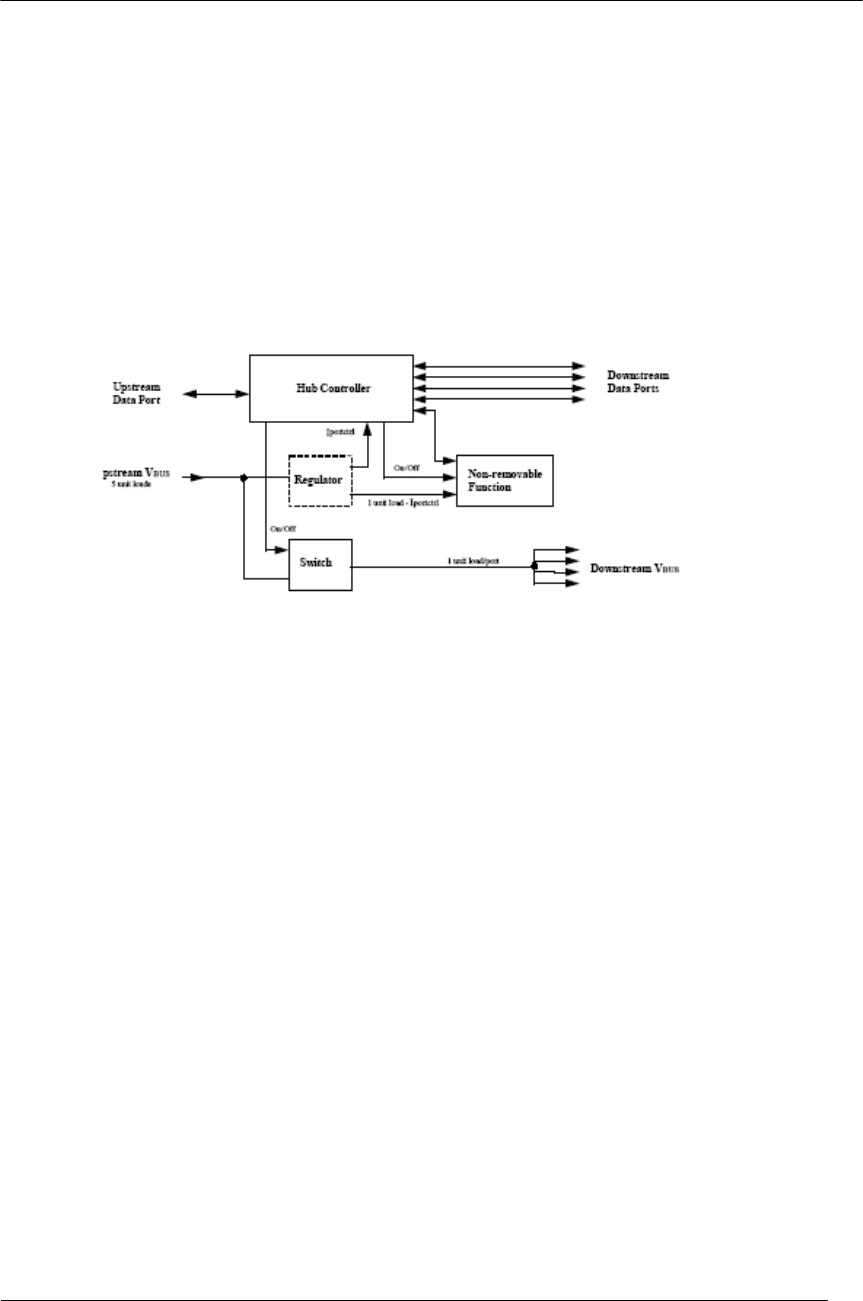
Spinpoint M8U-Internal Product Manual REV 3.4
46
INSTALLATION
Power switching on any non-removable function may be implemented either by removing its power or by
shutting off the clock. Switching on the non-removable function is not required if the aggregate power drawn
by it and the Hub Controller is less than one unit load. However, as long as the hub port associated with the
function is in the Power-off state, the function must be logically reset and the device must appear to be not
connected. The total current drawn by a bus-powered device is the sum of the current to the Hub Controller,
any non-removable function(s), and the downstream
facing ports.
Figure 6-12 shows the partitioning of power based upon the maximum current draw (from upstream) of five
unit loads: one unit load for the Hub Controller and the non-removable function and one unit load for each of
the external downstream facing ports. If more than four external ports are required, then the hub will need to
be self-powered. If the non-removable function(s) and Hub Controller draw more than one unit load, then the
number of external ports must be appropriately reduced. Power control to a bus-powered hub may require a
regulator. If present, the regulator is always enabled to supp
ly the Hub Controller. The regulator can also
power the non-removable functions(s). Inrush current limiting must also be incorporated into the regulator
subsystem.
Figure 6-12: Compound Bus-powered Hub
Power to external downstream facing ports of a bus-powered hub must be switched. The Hub Controller
supplies a software controlled on/off signal from the host, which is in the “off” state when the device is
powered up or after reset signaling. When switched to the “on” state, the switch implements a soft turn-on
function that prevents excessive transient current from being drawn from upstream. The voltage drop across
the upstream cable, connectors, and switch in a bus-powered hub must not exceed 350 mV at maximum rated
current.
6.2.3.3 Self-powered Hubs
Self-powered hubs have a local power supply that furnishes power to any non-removable functions and to all
downstream facing ports, as shown in Figure 6-13. Power for the Hub Controller, however, may be supplied
from the upstream V
BUS (a “hybrid” powered hub) or the local power supply. The advantage of supplying the
Hub Controller from the upstream supply is that communication from the host is possible even if the device’s
power supply remains off. This makes it possible to differentiate between a disconnected and an unpowered
device. If the hub draws power for its upstream facing
port from VBUS, it may not draw more than one unit
load.
The number of ports that can be supported is limited only by the address capability of the hub and the local
supply. Self-powered hubs may experience loss of power. This may be the result of disconnecting the power
cord or exhausting the battery. Under these conditions, the hub may force a re-enumeration of itself as a bus-
powered hub. This requires the hub to implement port power switching on all external ports. When power is
lost, the hub must ensure that upstream current does not exceed low-power. All the rules of a bus-powered
hub then apply.


















